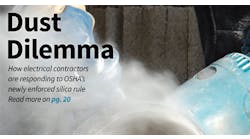Your maintenance procedure for circuit breakers should begin with inspection. That includes such things as:
- Inspect breaker cubicle for signs of arcing or flash. Note any issues.
- Visually examine conductors for discoloration and signs of insulation damage.
- Look for signs of insect or rodent invasion in the surrounding panel.
- Look for any broken parts, loose hardware (e.g., a bolt on the floor), and other signs of mechanical damage.
- Testing and inspecting mechanical linkages and other components. Don't try to fix these; order replacements.
- Cleaning mechanical components. The main issue here is to prevent actually spreading grime via improper cleaning.
- Lubricating mechanical components. Use the specified lubricant, not whatever's handy. Mixing incompatible greases can easily destroy a $2,500 breaker. Apply only in the amounts and locations specified.


